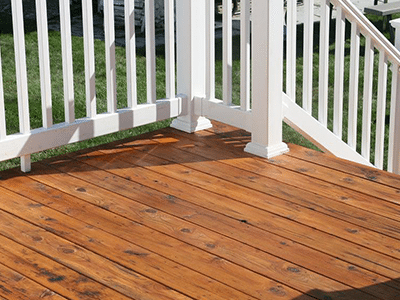Maintain and Protect: Release the Power of Fence Staining
Maintain and Protect: Release the Power of Fence Staining
Blog Article
Picking the Right Spot for Your Fencing: Tips and Considerations
When it concerns improving the look and preserving of your fencing, choosing the ideal tarnish is critical. With a wide array of choices readily available, it can be frustrating to identify which stain will finest match your requirements. This guide will provide you with pointers and considerations to aid you make a notified decision. We will certainly check out the different sorts of fence stains, aspects to take into consideration before choosing a tarnish, suggestions for preparing your fencing for discoloration, and the distinctions between water-based and oil-based discolorations. Furthermore, we will dive into selecting the right discolor color to enhance your fencing and enhance your outside room. By adhering to these standards, you can guarantee that your fencing stays protected and visually pleasing for several years to find.
Comprehending Different Kinds Of Fence Stains

On the other hand, water-based discolorations are made from acrylic or latex and provide an extra refined color to the timber. They create a protective movie on the surface of the timber, stopping wetness from seeping in and shielding versus UV damage. Water-based discolorations are less complicated to tidy up and have a faster drying out time compared to oil-based discolorations. They are likewise much less most likely to break or discolor over time.
Picking in between oil-based and water-based stains depends on different aspects, including personal choice, the desired appearance, and the degree of upkeep called for. Oil-based spots are suggested for fences in high-traffic areas or those regularly subjected to severe weather. fence staining and sealing. Water-based discolorations, on the various other hand, are a prominent option for surround domestic areas where look and convenience of use are very important
When choosing the ideal discolor for their fencing,Comprehending the differences between water-based and oil-based discolorations aids home owners make an informed decision. Considering the specific demands of the fence, such as its area, direct exposure to sunlight, and desired visual, will ensure that the picked discolor provides durable security and enhances the total appeal of the fence.
Variables to Take Into Consideration Before Picking a Spot

One more aspect to consider is the kind of wood your fence is constructed from. Different kinds of wood soak up spots in a different way, resulting in differing levels of shade intensity and sturdiness. For instance, softwoods like ache may require even more regular discoloration compared to woods like cedar or redwood. Furthermore, specific woods might be much more vulnerable to concerns like rot or insect problem, which may impact the choice of discolor to maintain the fence and safeguard.
The climate and climate condition in your location should likewise be taken into account. You might need a tarnish that provides additional security versus dampness and UV rays if you live in a location with harsh winters or high moisture. Likewise, if your fencing is revealed to guide sunshine for extended periods, a discolor with UV inhibitors can aid prevent fading and discoloration.
Finally, it is necessary to consider your preferred visual. Different spots supply different shades and finishes, permitting you to customize the appearance of your fence (deck staining). Think about the overall design and style of your residential property, in addition to any type of neighborhood policies or home owner organization standards that might dictate the appropriate discolor shades
Tips for Readying Your Fence for Discoloration
Cleaning the fence is an important step as it eliminates dust, grime, and any type of previous finishings that might conflict with the staining process. Rub the surface area gently, paying additional focus to areas with stubborn spots or mold and mildew.
After cleaning, enable the fencing to dry entirely. fence staining. This action is critical as tarnishing a wet or wet surface can cause inadequate adhesion and an uneven surface. Depending upon the climate problems, it might take anywhere from a few hours to a few days for the fence to dry thoroughly. Guarantee that the fencing is completely dry prior to waging the discoloration process.
Before staining, inspect the fencing for any kind of problems, such as loosened boards or nails. Fix any type of problems to make sure that the fencing is structurally sound. Additionally, consider using a timber conditioner or brightener to the surface area. This product helps to open the timber pores, permitting the discolor to permeate much more efficiently and evenly.

Contrasting Water-Based and oil-based Stains
When picking a discolor for your fencing, it is essential to contrast the qualities and advantages of oil-based and water-based discolorations. Both types of discolorations have their own benefits and considerations, so it is critical to comprehend the distinctions in between them.
Oil-based stains are understood for their longevity and resistance to tear and put on. Additionally, oil-based stains tend to last longer than water-based discolorations, making them a preferred selection for fencings.
On the various other hand, water-based discolorations are a lot more eco-friendly and much easier to tidy up. They have a lower VOC (volatile organic substance) web content, which suggests they launch less damaging fumes into the air. Water-based stains also dry quicker, permitting for a quicker Web Site application and less downtime. They might not supply the same degree of protection as oil-based spots, specifically in rough weather problems.
Eventually, the option between water-based and oil-based discolorations depends upon your particular requirements and preferences. When making your decision, consider variables such as longevity, environmental impact, and convenience of application. Consulting with a specialist or seeking suggestions from experts can also aid make certain that you pick the best tarnish for your fence.
Selecting the Right Discoloration Color for Your Fence
The option of an appropriate discolor shade for your fence is a crucial aspect of improving its aesthetic allure and complementing the general design of your outdoor space (fence staining). The ideal discolor shade can transform a level, normal fence right into a striking focal point that includes depth and character to your residential or commercial property
When picking a discolor shade for your fence, it is necessary to think about the design and design of your home. Earthy tones such as neutrals and browns can create a cozy and inviting appearance if you have a conventional or timeless style home. On the various other hand, if you have a modern or modern home, you might take into consideration choosing for vibrant and lively colors that make a declaration.
Another variable to consider is the all-natural environments of your residential property. If you have a whole lot of greenery, a discolor color that enhances the natural landscape, such as environment-friendlies or deep reds, can develop a harmonious and natural appearance.
Additionally, it's worth taking into consideration the upkeep needed for different tarnish shades. Lighter shades often tend to show dirt and put on even more conveniently, while darker shades can conceal blemishes and need less frequent touch-ups.
Eventually, the option of stain color for your fence must reflect your individual style and choices - deck cleaning. Take the time to seek advice from and explore different choices with experts if needed, to make sure that you select the perfect discolor color that improves the elegance and allure of your fence
Conclusion
In conclusion, when it comes to choosing the right tarnish for your fencing, it is crucial to comprehend the different types of discolorations readily available and take into consideration variables such as longevity and preferred appearance. Choosing the ideal discolor color can boost the general looks of your fence.
We will explore the different kinds of fencing discolorations, aspects to take into consideration prior to selecting a discolor, suggestions for preparing your fence for discoloration, and the differences in between oil-based and water-based discolorations.Differentiating in between oil-based and water-based discolorations is critical when recognizing different kinds of fence discolorations. Water-based stains are less complicated to clean up and have a much faster drying time contrasted to oil-based stains. Furthermore, oil-based stains have a tendency to last longer than water-based discolorations, making them a prominent selection for fences.
In verdict, when it comes to selecting the right discolor for your fencing, it is important to comprehend the various types of spots readily available and consider aspects such as resilience and preferred look.
Report this page